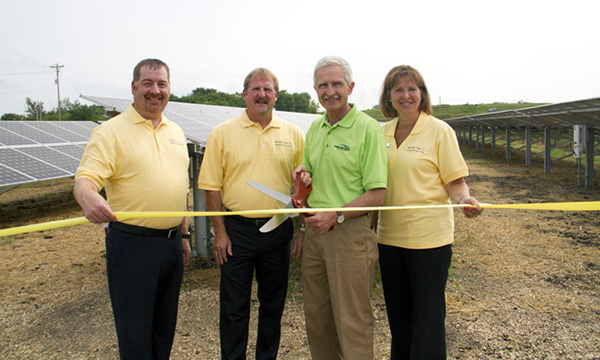
A New Kind of Farm or Garden: Minnesota Goes Solar
These days, many consumers are coming around to the idea that solar power is an excellent alternative to traditional energy sources such as nuclear and coal. For one thing, it’s better for the environment. For another, solar power systems are becoming much more affordable than they have ever been, even as the technology and efficiency behind solar power improves by leaps and bounds.
Home Solar Isn’t Always Practical
For some people, installing photovoltaic systems at home simply isn’t possible. This can be the case for a variety of reasons, many of which are simple, practical concerns. Some people happen to live in apartment buildings where going solar isn’t possible. Others have roofs on their homes that just aren’t suitable for solar. Are these folks simply out of luck when it comes to harnessing the clean energy of the sun?
What’s a Solar Farm?
While people in situations like the ones mentioned above may not be able to install solar systems at their home or apartment, they can take advantage of “solar farms.” What are solar farms, you ask? A solar farm or community solar garden is a solar power facility that people can invest in collectively.
Minnesota’s Going Solar With a New Kind of Farm
Minnesota has recently been in the news for its community solar gardens. Most people don’t think of the northern Midwest as prime territory for photovoltaic arrays, but in actuality, solar works quite well the area.
Minnesota’s Renewable Portfolio Standard requires investor-owned utilities to generate approximately 30% of their total energy production through renewable means by the year 2020, and at least 10% of the power they produce must come from solar by the year 2030.
In order to help these goals become a reality, lawmakers and power providers in the North Star State have opened the doors for solar farms to proliferate.
An Investment that Pays Off, in More Ways Than One
Those who invest in solar farms can have their power consumption offset in direct proportion to the size of their investments. Those whose share of the power produced by the solar farm is more than they actually consume, can receive payments for the revenues that their investments generate. Consumers can invest at a level of up to 120% of their average annual electricity usage, and their credits appear on their normal monthly utility bills. Given all these facts – going solar couldn’t be much easier.
There are additional incentives available to solar farms that utilize solar panels made in state. The incentives offered depend on the brand and model of solar panel being installed, but some panels qualify for per-kWh rates as high as 18 cents. While that might not seem like much, over the course of a year, the savings can really add up.
[Photo Credit: ECT Coop]
Start making more
money today!
Search Categories
Tags
Tag Cloud
Latest from Twitter
Contact Us
Call us at 310-540-8900 or fill out the form below and we’ll tell you how you can get high quality leads for free*.
* Get up to 10% free leads on your first order!